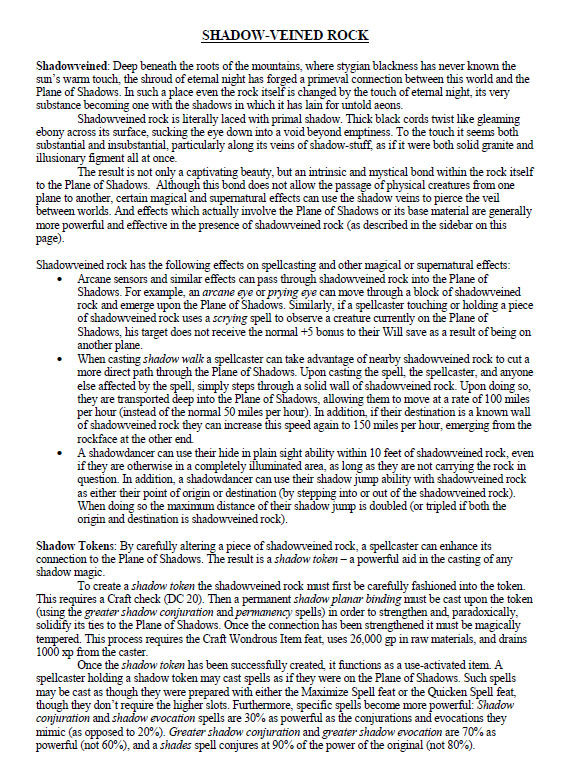IN THE SHADOW OF THE SPIRE
Session 10A: The Labyrinths of Ghul
Tee and Elestra both recognized the statues as depicting the legendary figure of Ghul the Skull-King…
Towards the beginning of the campaign journal for Session 10, there are a couple large blocks of text – one for Ghul the Skull-King and another for shadowveined rock — which were originally written up as handouts for the players: If/when their characters succeeded on the requisite Knowledge checks, I’d be able to hand them these one page summaries.
The alternative to this, obviously, would be for the GM to simply read or summarize this information out loud. So why go to the extra effort to write up a handout?
First, you’ll note that there’s a lot of information being conveyed in these handouts. I’ve tried to keep the presentation of that information efficient, but that’s just resulted in the information being quite dense. Presenting this amount of information in written form (particularly if accompanied by visual references or enhancements) can aid comprehension.
Second, it highlights the information as being of particular importance, helping to make sure that the players pay attention to it. Of course, this only works if you don’t overuse the technique. (These two handouts weren’t explicitly designed to be delivered in such rapid succession, but the group had failed their earlier Knowledge checks to recognize Ghul’s Labyrinth by ways of its unique architectural features, and it was only the more explicit examination of the statues of Ghul himself which provoked their memory.)
Third, such handouts can serve as rewards. This is particularly effective with certain groups (the ones who light up and start clapping their hands with glee when the GM dips his hand into the Big Box of Handouts), but even with players are less inherently excited by this sort of thing
For example, the original version of the Shadowveined Rock handout included a number of mechanics, as you can see in this PDF version of the same:
I didn’t include these mechanical details in the campaign journal, eschewing them for a purely narrative approach, but the original handout included all kinds of information that would allow the PCs to leverage their discovery of the shadowveined rock to maximum effect (including unique items that they could either commission or have Ranthir create, for example).
Fourth, on a similar note, such handouts serve as reference material, allowing the players to easily review what they know about a particular topic (without having to freshly quiz the GM about it). This is particularly important because these handouts — like any exposition dump — should only exist for a purpose. The GM shouldn’t just start waxing rhapsodic about obscure details of their campaign world in the middle of the session without any rhyme or reason.
In the case of the shadowveined rock handout, the primary purpose was to serve as a rules reference when the players needed it later. (I do this a lot, actually: Packaging up snippets of non-core mechanical material into handouts and effectively drip-feeding the content into the campaign. In the case of shadowveined rock, it was something I had created. But this is also a really effective technique for incorporating material from supplements.)
In the case of the Ghulwar handout, the knowledge of Ghul provided context that helped them to navigate the dungeon they were standing in. So being able to refer back to these key facts regarding his life and exploits was continually useful for them (particularly as their expeditions extended between sessions and, later, years of out-of-game time).












